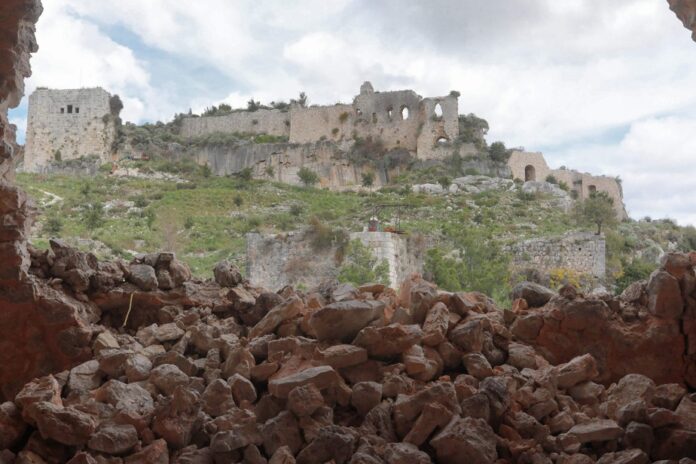(Al-Haffah) The Syrian fortress of Saladin has withstood many assaults, but its stone ramparts are cracking, weakened by the February 6 earthquake which, in addition to its heavy human toll, damaged many historical sites in Syria .
On a hill in the province of Latakia, Zouhair Hassoun observes with concern the towers of this fortress dating from the Byzantine era, built in the 10th century.
“All the towers of the fortress are in danger, one of them even collapsed after the earthquake,” says the guardian of the monument.
Spared by the civil war that has ravaged the country since 2011, Saladin Fortress remained open to visitors until the earthquake that killed nearly 46,000 people in Turkey and at least 6,000 in Syria.
The earthquake damaged 40 archaeological and historical sites across Syria, according to the Directorate General of Antiquities and Museums (DGAM).
Walls, ceilings or even towers of historic castles now have cracks or have partially or even completely collapsed, according to the DGAM, which indicates that churches, mosques and museums – some dating back to the Middle Ages – have also suffered of the earthquake.
As he passes under three cracked arches, Zouhair Hassoun walks cautiously, and shows the facade of the huge fortress listed in 2006 as a UNESCO World Heritage Site, then in 2013 on its list of World Heritage in Danger.
“Each block of stone weighs at least a ton,” he points out. “Any part of the fortress that rolls into the valley can never be salvaged. »
And, he predicts, “there will inevitably be rockslides in the event of heavy rains or another tremor, it is a matter of time. »
At the national museum in Damascus, the director of the DGAM Nazir Awad circles on a map the six provinces most affected by the earthquake, including that of Latakia.
“We have counted more than 40 damaged sites,” he said, adding that the citadel of Aleppo and its Old City were the most affected by the earthquake.
Some damage requires “an emergency response so that these priceless treasures are not lost,” he adds.
According to Mr. Awad, shortly after the earthquake, a UNESCO delegation visited Aleppo to inspect the damage caused to its citadel, its Old City – which the United Nations Organization classified in 2018 as World Heritage in Danger – and its “madrasahs”, schools of Muslim religious education.
The earthquake notably damaged parts of the Ottoman mill and the fortifications in the northeast of the citadel of Aleppo. Large parts of the lighthouse dome of the Ayyubid Mosque also collapsed.
“We urgently need international seismic experts to assess the situation,” insists Awad. “The sites won’t last long if we don’t intervene immediately. »
In areas beyond the control of government forces, sites in Idlib province and northern Aleppo suffered “serious damage”, he said, based on the testimony of local interlocutors.
Among these sites is the Byzantine church of Saint Simeon the Stylite, in the northwest of the province of Aleppo.
The western part of this church – which is listed as a UNESCO World Heritage Site as part of the Ancient Villages of Northern Syria – was damaged and the vault of its eastern facade was destroyed, as were some columns and decorations, according to Syrian archaeologist Fayez Qawsara.
Near the Turkish border, in Harem, one of the cities hardest hit by the earthquake in Syria, a century-old citadel has suffered serious damage: a few walls and arcades of shops adjoining it are no more than ruins.
“For a building to collapse is normal. But for a citadel that has withstood assaults for hundreds of years, it is strange and sad,” laments Firas Mansour, a Harem teacher and ancient architecture enthusiast.








